
The Story of the martyrdom of King. St. Edmund:
In the year 869, the Danes who had wintered at York, marched through Mercia into East Anglia and took up their quarters at Thetford. Edmund engaged them fiercely in battle, but the Danes under their leaders Ubbe Ragnarsson and Ivar the Boneless had the victory.
According to Abbo of Fleury, Edmund's earliest biographer, the story came to Abbo by way of St Dunstan, who heard it from the lips of Edmund's own sword-bearer. In Abbo of Fleury's version of events Edmund refused to meet the Danes in battle himself, preferring to die a martyr's death, with conscious parallels to the Passion of Christ:
"King Edmund stood within his hall of the mindful Healer with Hinguar (Ivar), who then came, and discarded his weapons. He willed to imitate Christ's example, which forbade Peter to fight against the fierce Jews with weapons. Lo! to the dishonorable man Edmund then submitted and was scoffed at and beaten by cudgels. Thus the heathens led the faithful king to a tree firmly rooted in Earth, tightened him thereto with sturdy bonds, and again scourged him for a long time with straps. He always called between the blows with belief in truth to Christ the Saviour."
"The heathens then became brutally angry because of his beliefs, because he called Christ to himself to help. They shot then with missiles, as if to amuse themselves, until he was all covered with their missiles as with bristles of a hedgehog, just as Sebastian was. Then Hinguar, the dishonorable viking, saw that the noble king did not desire to renounce Christ, and with resolute faith always called to him; Hinguar then commanded to behead the king and the heathens thus did. While this was happening, Edmund called to Christ still. Then the heathens dragged the holy man to slaughter, and with a stroke struck the head from him. His soul set forth, blessed, to Christ."
The king's body was ultimately interred at Beadoriceworth, the modern Bury St Edmunds. The shrine of Edmund soon became one of the most famous and wealthy pilgrimage locations in England and the reputation of the saint became universal.

(
photo credit)
Shrine of St. Edmund prior to its desecration and destruction during the wicked and misguided Catholic persecution of Henry VIII in the 1500's.
The date of Edmund's canonization is unknown, although Hermann's Life of Edmund, written in the late eleventh century, states that it happened in the reign of Athelstan (924–939). Edmund's popularity among the English nobility was lasting. It is known that his banner was borne in the Irish expedition of the Anglo-Normans and also when Caerlaverock Castle was taken in 1300. A banner with Edmund's crest was also carried at the battle of Agincourt. Churches dedicated to his memory are found all over England, including St Edmund the King and Martyr in London. There are a number of colleges named after St Edmund. His shrine at Bury St Edmunds was destroyed in 1539, during the English Reformation. His feast day is 20 November.

This is an image of what remains today of the Shrine of St. Edmund. Here is the caption to this photo (
photo credit):
The Abbey of St Edmund at Bury"The remains of the once great Abbey of St Edmund at Bury, ruined following the Dissolution of the Monasteries in 1539, provide a striking contrast to the glories of Ely, which escaped destruction because it had become an episcopal cathedral in 1109. Today at Bury, bare, partly built-over ruins - mostly rubble cores from once great walls and supporting pillars - are all that is left of what was one of the richest Abbeys in England. Originally founded circa 633 by the first East Anglian martyr-king,
Sigeberht (Liber Eliensis, I, 1), it later became the burial-place and shrine of the last East Anglian martyr-king, Edmund, one of the patron saints of England."
Next posts will be about the famous Wilton image and the fascinating "Legend of St. Edmund"

 (photo credit)
(photo credit) 


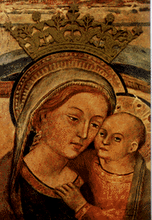
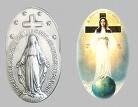

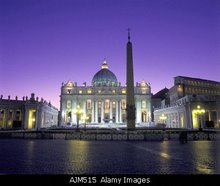

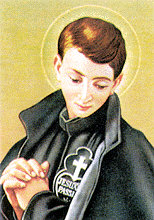
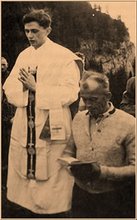
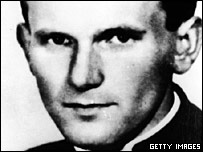
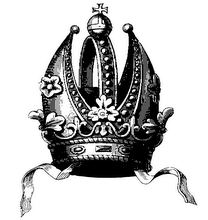
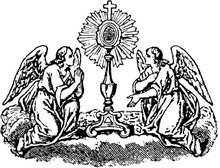
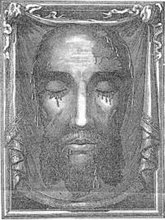
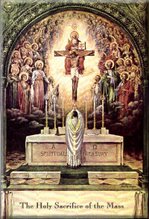





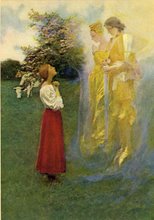
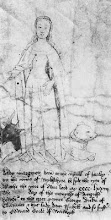01.jpg)


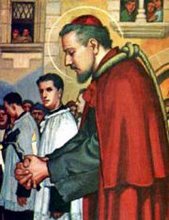

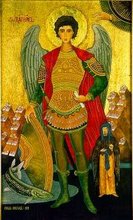

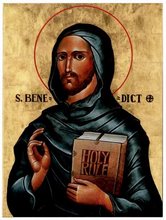




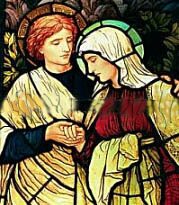

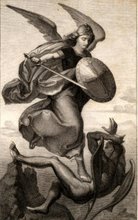



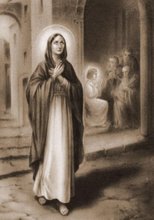
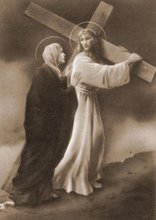
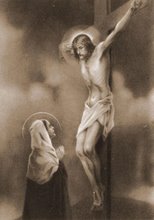
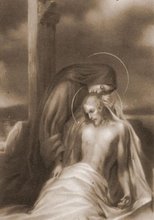
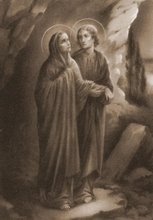




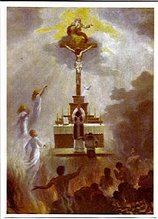


No comments:
Post a Comment